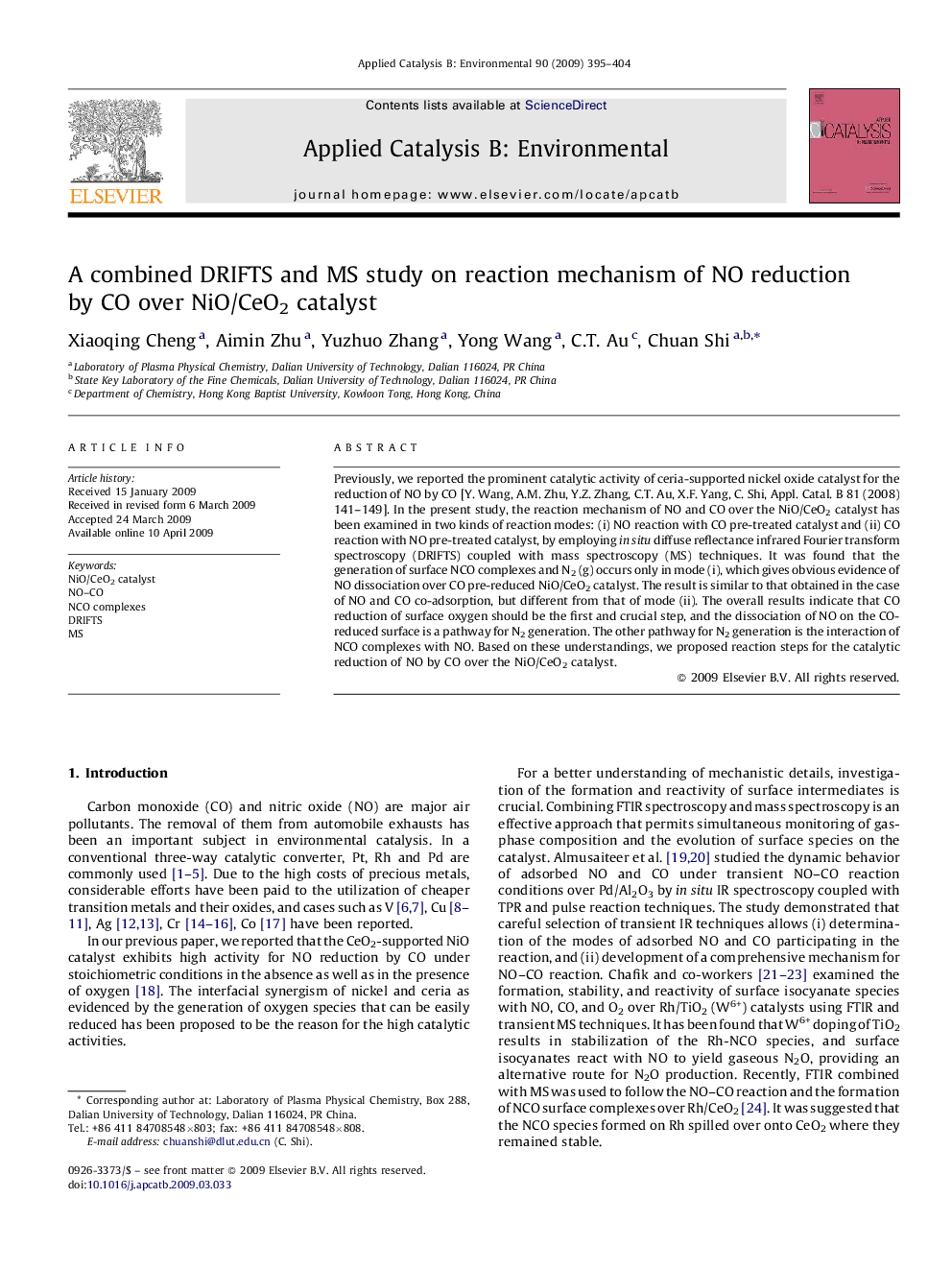| Article ID | Journal | Published Year | Pages | File Type |
|---|---|---|---|---|
| 47645 | Applied Catalysis B: Environmental | 2009 | 10 Pages |
Previously, we reported the prominent catalytic activity of ceria-supported nickel oxide catalyst for the reduction of NO by CO [Y. Wang, A.M. Zhu, Y.Z. Zhang, C.T. Au, X.F. Yang, C. Shi, Appl. Catal. B 81 (2008) 141–149]. In the present study, the reaction mechanism of NO and CO over the NiO/CeO2 catalyst has been examined in two kinds of reaction modes: (i) NO reaction with CO pre-treated catalyst and (ii) CO reaction with NO pre-treated catalyst, by employing in situ diffuse reflectance infrared Fourier transform spectroscopy (DRIFTS) coupled with mass spectroscopy (MS) techniques. It was found that the generation of surface NCO complexes and N2 (g) occurs only in mode (i), which gives obvious evidence of NO dissociation over CO pre-reduced NiO/CeO2 catalyst. The result is similar to that obtained in the case of NO and CO co-adsorption, but different from that of mode (ii). The overall results indicate that CO reduction of surface oxygen should be the first and crucial step, and the dissociation of NO on the CO-reduced surface is a pathway for N2 generation. The other pathway for N2 generation is the interaction of NCO complexes with NO. Based on these understandings, we proposed reaction steps for the catalytic reduction of NO by CO over the NiO/CeO2 catalyst.
